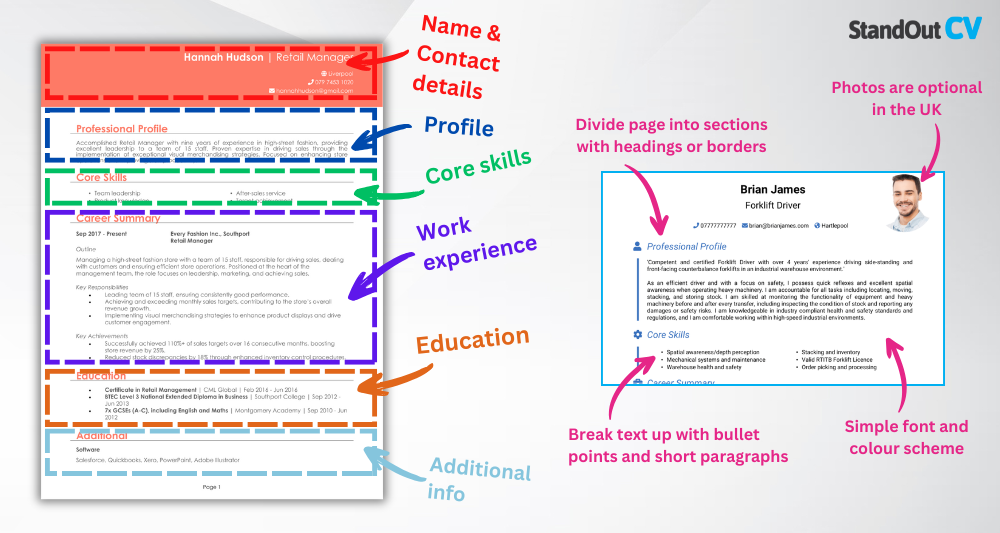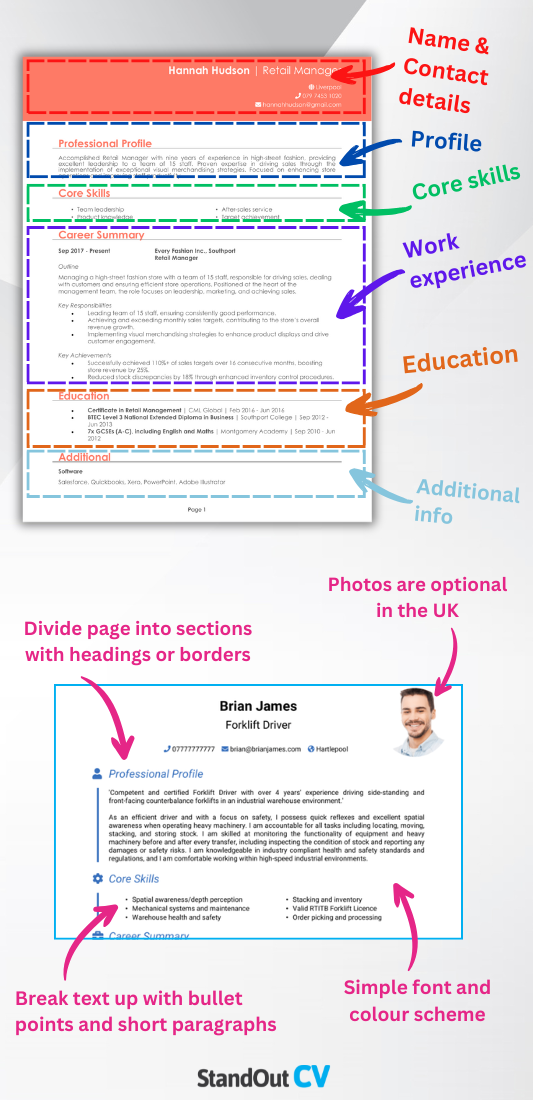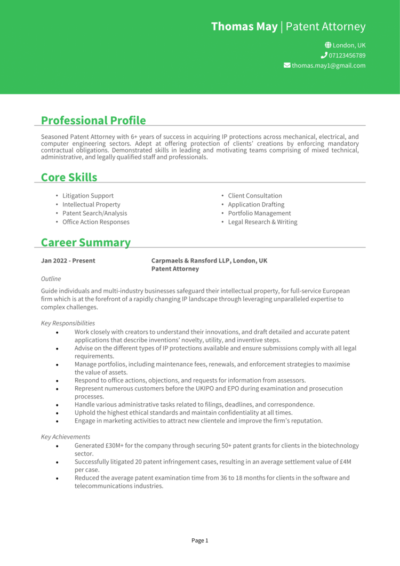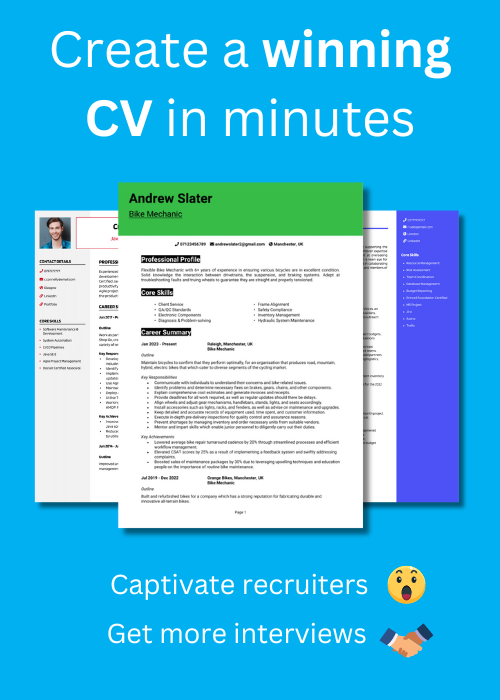You spend your days protecting inventions – now it’s time to perfect your own. If you want your next patent attorney role to be more than theoretical, your CV needs to demonstrate legal precision, technical knowledge, and a strategic mind.
If you want a CV as watertight as the patents you prosecute, follow this guide and its Patent Attorney CV example. It’ll help you put together an application that’s persuasive and polished enough to win over partners and HR alike.
Patent Attorney CV

How to write your Patent Attorney CV
Discover how to craft a winning Patent Attorney CV that lands interviews with this simple step-by-step guide.
Patent attorneys sit at the intersection of science and law – and so should your CV. You need to demonstrate your academic background, your legal expertise, and your ability to understand complex concepts.
This guide will take you step-by-step through writing a CV which stands out in a competitive legal field. Whether you’re moving into private practice or aiming for a role in-house, you’ll learn how to frame your skills and experience the right way.
The correct structure and formatting for a Patent Attorney CV


Clarity is everything in patent law – and your CV is no different. A clear and deliberate structure helps employers quickly understand your qualifications and specialisms. The aim is to make reading about your expertise as effortless as possible, which any busy recruiter will appreciate.
Here’s the layout to follow:
- Name and contact details – Keep these personal details at the top so a potential employer can reach out to you: a photo is totally optional.
- Profile – Immediately draw in the recruiter with a brief summary of your skills and experience.
- Core skills – Briefly highlight those qualities which make you the best candidate.
- Work experience – List your previous roles in reverse chronological order, with your most recent first.
- Education – Go through the academic history which underpins your expertise.
- Additional info – This optional section can include professional memberships, awards, or hobbies that showcase your suitability for the role.
Stick to a simple, professional font and break up large bodies of text using bullet points. Make sure each section is clearly labelled with bold headers, and leave enough white space between them to aid readability. Keep the document to a maximum length of two pages – and align your formatting consistently throughout. A cluttered format won’t reflect the rigour of your legal thinking – so keep it sharp and succinct, making sure to follow the above tips.
CV profile for a Patent Attorney


The CV profile isn’t just about listing your qualifications – it’s your moment to show the impact you’d have in any firm that hires you. This short, strategic paragraph should clearly convey the value you bring: whether it’s helping clients secure strong IP protection, navigating complex legal frameworks, or adding technical expertise to a firm’s portfolio.
Your profile should show not just where you’ve worked or what you’ve studied – but why you’d be a genuine asset. It’s your chance to reassure a recruiter that you’re someone who can deliver legal precision and commercial benefit from day one.
Patent Attorney CV profile examples
Profile 1
Qualified Patent Attorney with over 10 years of experience handling patent prosecution, opposition, and portfolio management for clients in the electronics and telecommunications sectors. Experienced advising start-ups and multinationals on IP strategy, freedom-to-operate, and patentability. Skilled in EPO proceedings and UKIPO practice.
Profile 2
Chartered Patent Attorney with seven years of experience supporting clients in the pharmaceutical and biotech industries. Adept at drafting patent specifications, responding to office actions, and managing global filings. Strong track record in coordinating with inventors and R&D teams to protect innovation and guide commercial strategy.
Profile 3
Diligent Patent Attorney with five years of post-qualification experience, focusing on mechanical and engineering patents for SMEs and industrial clients. Confident handling oppositions, conducting prior art searches, and advising on infringement risk. Well-versed in EPO opposition proceedings and international filing strategies under PCT.
Details to put in your Patent Attorney CV profile
To build a compelling profile, include:
- Where you worked – Private practice, in-house legal teams, IP law firms, or international consultancies
- Your top qualifications – Dual-qualified status, European Patent Attorney, UK Chartered Patent Attorney
- Essential skills – Drafting, prosecution, oppositions, freedom-to-operate advice, PCT filings
- Technical background – Degree in physics, biology, engineering, chemistry, software, etc.
- Client sectors – Medical devices, automotive, fintech, clean tech, biotech, consumer electronics
How should you write a core skills section?


This section isn’t the place for vague buzzwords – recruiters reviewing patent attorney CVs are scanning for specific, hard skills that align with their legal and technical requirements.
Make this paragraph a snapshot of your practical strengths. Include areas of law you’re experienced in and any tools or systems you’re proficient in. The more your CV skills reflect the language of the job description, the more likely your CV is to make it past the first round.
Highlight the skills you’ve actually used: this section is all about showing you have the hands-on capability to step into the role and make an immediate difference.
Key skills for a Patent Attorney CV
- Patent Drafting and Filing – Preparing detailed patent applications, including technical descriptions and claims, for submission to national and international offices.
- Intellectual Property Law Expertise – Applying in-depth knowledge of patent laws, treaties (e.g. EPC, PCT), and case law to protect clients’ innovations.
- Technical Analysis and Invention Evaluation – Assessing inventions for novelty, inventive step, and industrial applicability to determine patentability.
- Patent Prosecution and Office Actions – Responding to examination reports, objections, and rejections from patent offices to advance applications.
- Prior Art Searching and Analysis – Conducting comprehensive searches to identify existing patents and scientific literature relevant to new inventions.
- Client Advisory and Strategy Development – Advising inventors, businesses, and R&D teams on IP strategy, portfolio management, and commercial protection.
- Opposition and Litigation Support – Assisting in patent oppositions, invalidity actions, and enforcement proceedings before tribunals or courts.
- International IP Coordination – Managing global patent filings and coordinating with foreign associates to protect inventions in multiple jurisdictions.
- Legal Documentation and Reporting – Preparing legal opinions, freedom-to-operate reports, and technical assessments for corporate or legal use.
- Cross-Disciplinary Collaboration – Working closely with scientists, engineers, and legal professionals to understand and articulate complex innovations.
Writing about your work experience


Your work history needs to prove that you’ve handled real patents, delivered strategic advice, and made a meaningful impact in the businesses you’ve worked for. Employers want to see what industries you’ve supported and the scale of your work.
List your work experience in reverse chronological order. For each one, start with a short summary of the organisation and your position. Then break down your responsibilities and achievements using bullet points. Be specific about the types of patents you worked on and results you helped secure.
Earlier roles, such as IP paralegal or trainee attorney, should also be included to show your progression.
Formatting your job history for your CV

- Outline – Introduce the firm or company, your area of focus, and what kind of clients or industries you supported.
- Responsibilities – Use action words like “prosecuted” and “advised.” For example: “prosecuted European and UK patent applications in the fields of software and consumer tech” or “advised start-ups on IP strategy and freedom-to-operate clearance.” Mention specific jurisdictions, technologies, or legal processes.
- Achievements – Highlight any measurable or standout achievements: successful oppositions, portfolio expansions, inventor relationships, or notable commercial value delivered. Include metrics or names (where not confidential).
Work experience samples for a Patent Attorney
Patent Attorney | Calder & Levinson IP Ltd
Outline
Managed patent portfolios for clients in the electronics and semiconductor sectors at a leading European IP firm, providing strategic advice and prosecution support.
Responsibilities
- Drafted patent specifications for UK and EP filings in collaboration with inventors
- Responded to office actions from EPO and UKIPO, including inventive step and clarity objections
- Advised clients on freedom-to-operate and infringement risk assessments
- Attended examiner interviews and oral proceedings at the EPO
- Monitored competitor patents and conducted IP landscape reviews
Achievements
- Achieved successful grant of 50+ EP patents with minimal examination delay
- Helped a client secure exclusivity on a semiconductor process across 11 jurisdictions
- Recognised for accuracy and efficiency by senior partners and retained clients
Patent Attorney | Redridge Biotech Legal Services
Outline
Supported IP protection efforts for pharmaceutical and biotech clients at a specialist law firm, handling drafting, filing, and post-grant activity.
Responsibilities
- Prepared UK and PCT patent applications for novel compounds and therapies
- Advised R&D teams on patentability and timing of disclosures and publications
- Liaised with foreign associates on prosecution strategy and office actions
- Reviewed and edited technical documentation for clarity and legal compliance
- Assisted in oppositions before the EPO, including drafting appeal statements
Achievements
- Secured key patents for a new oncology treatment ahead of market launch
- Reduced average response time to office actions by 20% across active clients
- Contributed to firm’s publication on CRISPR patent landscape
Patent Attorney | Hightower Engineering IP Group
Outline
Provided patent services for engineering and manufacturing clients, including drafting, prosecution, and advising on IP strategy and enforcement.
Responsibilities
- Drafted mechanical and electro-mechanical patent applications for UKIPO and EPO
- Advised SMEs on IP portfolio development aligned with product launches
- Conducted infringement analyses and delivered risk reports to clients
- Handled oppositions and revocations before the EPO and national offices
- Collaborated with design attorneys on filing joint protection strategies
Achievements
- Supported a key client in defending patent rights during a high-profile opposition
- Helped streamline internal docketing, improving filing accuracy by 25%
- Increased client retention by delivering clear, commercially focused advice
How to write your education section


This section should cover both your legal and technical education – and reflect the dual nature of the job. Patent attorneys need to show both scientific credentials and legal expertise.
Start with your most recent qualifications and work backwards. Mention any STEM degrees, followed by legal training such as the Postgraduate Certificate in IP Law, EQE, or CIPA-accredited courses. If you’re part-qualified, mention your progress and passed exams. Also include any language skills or training that may be relevant to international work.
Recommended qualifications for a Patent Attorney
- Degree in Science, Engineering or Technology (minimum 2:1) – Required foundation for qualifying as a UK or European patent attorney
- Chartered Patent Attorney (UK) – Recognised legal qualification for patent professionals in the UK
- European Qualifying Examination (EQE) – Certification to practise before the European Patent Office
- Postgraduate Certificate in Intellectual Property Law – Required course typically completed during training
- Membership of CIPA or EPI – Demonstrates professional standing and commitment to continued legal development





